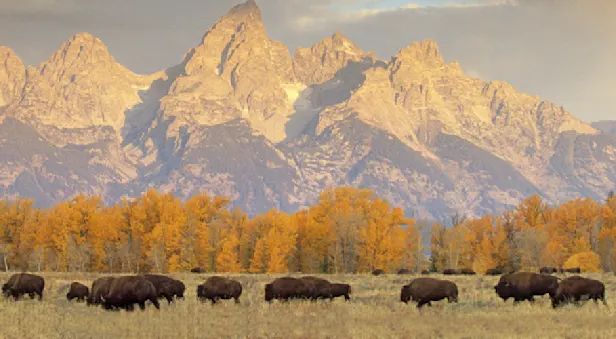Know Before You Go
Elk Facts | Yellowstone Wildlife Guide
Elk are some of the most important and influential animals in the Greater Yellowstone Ecosystem. Elk have shaped the environment of the park, affecting plant growth, influencing the materials beavers use to build dams, and even impacting stream temperatures.
Now that the elk population has returned to a more sustainable number—around 5,000 rather than the 18,000 that inhabited the park pre-wolves—their influence is more positive. During the summer, 10,000 to 20,000 elk can be found in the park in multiple distinct herds.
The elk is the most abundant big game animal in Yellowstone making up more than 90 percent of the wolves’ winter diet. Many species of scavengers survive off these kills.
Elk are the same species as the “red deer” in Europe. Some Europeans use the term “elk” for moose. To avoid confusion, elk in North America are often referred to by the Shawnee name wapiti.
PHYSICAL CHARACTERISTICS
Female elk weigh up to 500 pounds, while massive bulls can reach a weight of 700 pounds. An elk’s coat ranges from tan in the summer to dark brown in the winter. Their coloration becomes darker around their legs, stomach, head and the shaggy mane that extends from their neck to their chest. Elk have a sandy-colored rump and a short tail. They have a stocky body and long, slender legs and can be 5 feet high at the shoulder and 5 to almost 9 feet in length from nose to tail.
Only males have antlers, which they shed in March or April. The new ones begin growing soon after the old ones drop and will weigh as much as 30 pounds per pair! The space between the tips of the antlers can be as wide as 6 feet. When males fight, they don’t stab with the antlers; instead they lock them together and wrestle, with the stronger male winning the battle. These battles rarely result in serious injuries.
HABITAT & FEEDING HABITS
Elk are grazers and browsers, feeding on grasses, sedges and forbs in summer and woody growth (aspen and willows) during the winter months. They are also “ruminants,” which means they are cud chewers with four-chambered stomachs. When they eat grasses and twigs, the plant material enters the first chamber—the rumen—where bacteria begins the process of breaking down the cellulose into fatty acids that can be digested by the elk. They then regurgitate the “cud” to chew and swallow again while at rest, at which point it goes through the other stomach chambers and gets broken down by stomach acids similar to a nonruminant digestive system.
This method of digestion has a good survival value for ruminants. They can eat a large amount of food quickly while they are exposed to predation and then take the time to digest properly in a more secluded spot.
Before the reintroduction of wolves, elk browsed so intensely on willows and aspens that those shrubs and trees had nearly disappeared. This had severe repercussions for a number of species and habitat types.
Herd Behavior
Elk are sociable animals, and summer herds can comprise of as many as 400 individuals before they break up into harems during the fall mating season. These summer herds are matriarchal and are typically dominated by a single cow. As the autumn breeding season approaches, bulls form harems consisting, on average, of six females and four young. Males fiercely defend their cows and calves, using their intimidating size to their advantage. Generally, the largest bull with the most impressive antlers is dominant. The fall rut is characterized by bugling echoing through the valleys in the early morning and late evening.
Bulls are only territorial during mating season and are otherwise not aggressive toward other elk. During the winter after the rut, elk will be found in loose groupings that may consist of all bachelors, or a mixture of adult females and young. Older males may wander alone, placing them at higher risk of predation.
Elk tend to migrate with the snowline, moving to higher ground during the summer and dropping into lower valleys with shallower snow during the winter.
REPRODUCTION
Elks mate from early September to October. Bulls use a bugling call to attract females. At 16 months old, bulls and cows are sexually mature, although young males do not typically breed due to competition with larger, more mature elk. The gestation period of a female is 249 to 262 days (between eight and nine months) and a single calf is typically produced (twins are rare). Calves weigh between 33 to 35 pounds at birth and have creamy spots and soft hooves. Mothers are very protective; they live alone and are the sole caretakers of their young for approximately 16 days, until the calf is ready to join the herd. Weaning is complete within 60 days.
See Elk on These Yellowstone Safaris

Hidden Yellowstone & Grand Teton Safari
A small-group exploration of Yellowstone and the Tetons as few get to experience these iconic parks—scout for wildlife and discover secret places with our naturalist guides who know this region intimately.
























